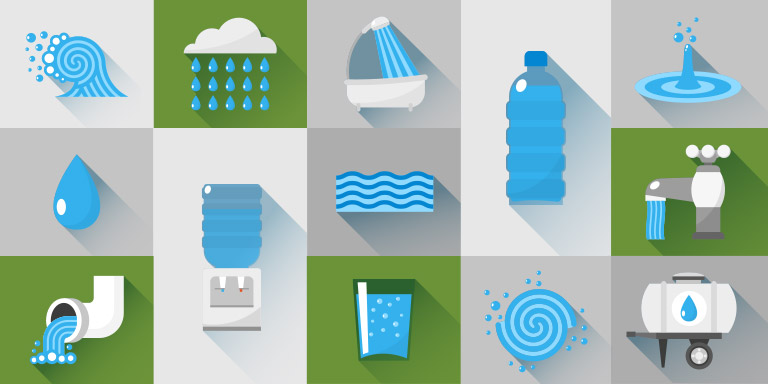Water, a precious but diminishing commodity – can technology and investment make a difference?
‘One day, wars will not be about religion or land, but water.’ It’s one of those statements that has been said for decades and we all nod and think ‘how terrible’. Drinking water – along with food, shelter and oxygen – is of course such a basic human need.
The UN Committee on Economic, Social and Cultural rights defines the human right to water as encompassing safe, acceptable, accessible and affordable water for personal and domestic use1. For many of us in the developed world, the thought of not being able to simply turn on the tap for fresh, clean water is horrifying.
Yet could we be edging closer to a future without that certainty? A recent announcement has focused on the UK’s diminishing water resources, coupled with a rising population. Sir James Bevan, the Chief Executive of the Environment Agency stated that England faces “the jaws of death” – that’s the point at which we are likely to run short of water – within 25 years2.

When you look at the global picture, it is clear that the crisis is already happening. Two billion people (that’s 1/3 of the global population), currently experience severe water scarcity, for at least a month of the year. Half a billion face severe water scarcity throughout the whole year3. Certain countries such as Ethiopia and Sudan have long been drought prone and with the continuation of climate change, desperate scenarios are likely to become more severe, frequent and widespread4.
In fact, water shortage has ranked in the top five global threats for seven consecutive years, in the World Economic Forum’s Global Risk Report5.
Tackling water shortages
If society can address this issue, it will require a three-pronged approach, using current resources better, improving infrastructure and new technological approaches.
Reducing waste
Firstly, as Sir James Bevan explained6, it will mean cutting usage and wastage. British water companies have pledged to cut leakage of pipes by 50% by 2050. Individual action can help too – especially as appliances such as dishwashers and washing machines increasingly offer effective eco-settings cutting water usage, and home monitoring systems will enable us to keep better track of usage. Price rises may also be necessary to encourage people to use water more carefully7.
Better infrastructure
Secondly, we will have to rely on infrastructure and approaches that enable us to save and distribute water better. This is likely to include super-size reservoirs (and a streamlined planning process as these are often unpopular amongst nearby communities), such as that proposed near Abingdon in Oxfordshire8. It is probable that transporting water from wetter areas to those that are more drought prone will become increasingly normal.
For developing countries, economic progress often relies not just on energy consumption, but on water too. It has been found that investment in water resources management and sanitation structure pays back, boosting economic growth and contributing to poverty eradication9.
Technological solutions
Thirdly, it will require technological fixes. These include current methods such as desalination, as well as other pioneering approaches.
Because just 0.014% of all water on Earth is both fresh and easily accessible, and of the remaining water, 97% is saline and almost 3% is challenging to access10, it means that desalination is a very useful option. It’s already widely used in places such as the Middle East. However, the main barrier to wider application is that it is a costly, energy intensive process.
This could be changing, with the news that aerospace and defence company, Lockheed Martin11, has developed and patented a graphene filter which they claim would reduce the energy cost of conventional reverse osmosis desalination by 20%, whilst improving the flow of water by 500%.
Wastewater treatment is used to recapture water that would otherwise be lost. It remains a resource intensive process. Here though, innovative approaches are being developed. A machine developed by Sedron Technologies12 can produce clean drinking water from human faeces – helping to address sanitation issues which often go hand in hand with water shortages. Bill Gates gamely demonstrated the machine by drinking from it.
Technology is increasingly helping to reduce water wastage too. Pipe bots13 are robots that patrol the water distribution systems to find smaller leaks than can usually be detected. The plan is that this will lead to ‘search and repair’ bots that stop water leaks before they become major. Multi-sensor monitoring of pipes is already carried out by systems such as those created and produced by University of East Anglia spin-out company, Syrinix14.
Meanwhile, tech giants such as Microsoft are improving water efficiency in the agriculture sector15, something that has global application. Precision irrigation uses smart sensors in fields, which, when combined with drone images, can ensure crops are only watered where required.
Solutions don’t have to be cutting-edge either. Low-tech devices, for example using solar power to distil water16, offer an affordable capability to make any water source drinkable.
Investing in the future of water
Whilst it may be controversial to generate monetary returns from such an essential resource as water, it is likely that the technology needed to recycle, purify, and deliver clean water to growing urban populations may not ever be developed without the financial backing of private companies and investors. At Holden & Partners, we deem water management to be a key theme, accessed through our Ethical, Sustainable, and Thematic (EST) investment philosophy, offering opportunities for investors.
Many of the investment funds used within our EST portfolios include considerable exposure to companies providing solutions to water scarcity and safeguarding water resources. Three examples in this expanding market are: Xylem, a water technology provider developing solutions for collection, distribution and treatment; Danaher, whose wastewater treatment arm, Trojan Technologies, is a leader in purification using ultraviolet disinfection; and Ecolab, which manufactures a range of cost-effective household products that require lower levels of water use. These companies are held to varying degrees in our EST model portfolios through the FB WHEB Sustainability, Pictet Global Environmental Opportunities, Jupiter Ecology, and Cheviot Climate Assets funds.
Water is a vital input in a range of industrial activities. Efficiency improvements in agriculture and water treatment prior to reuse in other areas is therefore crucial in tackling shortages. It is in these areas that the majority of investment firms focus on when searching for opportunities. System operators, such as traditional utility companies, also have a role to play in limiting water waste whilst serving rapidly expanding populations. We continue to believe, therefore, that possessing exposure to all sectors which are helping to prevent a global water crisis now, can be a rewarding and profitable endeavour.
The future of our water security, from those in the direst circumstances to our privileged ability to turn on the tap, can only be addressed by truly valuing water. Alongside action for climate change, we need behavioural shifts and investment across the sector, that enable us to access, preserve and share this essential requirement of all life.
The content of this article is for your general information and use only and is not intended to address your particular requirements. It should not be relied upon in its entirety and shall not be deemed to be, or constitute, advice.
Footnotes:
-
United Nations website, https://www.un.org/waterforlifedecade/human_right_to_water.shtml
-
‘Escaping the jaws of death: ensuring enough water in 2050’.
Speech by Sir James Bevan, Chief Executive of the Environment Agency, Waterwise Conference, (19 March 2019) https://www.gov.uk/government/speeches/escaping-the-jaws-of-death-ensuring-enough-water-in-2050 -
Hoekstra, A.Y.; Mekonnen, M.M. (12 February 2016). ‘Four billion people facing severe water scarcity’ advances.sciencemag. American Association for the Advancement of Science.
-
‘Global drought and severe drought-affected populations in 1.5 and 2 ◦C warmer worlds’, Wenbin Liu et al., Earth System Dynamics, 9, 267–283 (2018) https://www.earth-syst-dynam.net/9/267/2018/esd-9-267-2018.pdf
-
World Economics Forum, The Global Risks Report 2019,https://www.weforum.org/reports/the-global-risks-report-2019
-
‘Escaping the jaws of death: ensuring enough water in 2050.’
Speech by Sir James Bevan, Chief Executive of the Environment Agency, Waterwise Conference, (19 March 2019) https://www.gov.uk/government/speeches/escaping-the-jaws-of-death-ensuring-enough-water-in-2050 -
Science News (2018) https://www.sciencenews.org/article/future-will-people-have-enough-water-live
-
BBC News (2018) https://www.bbc.co.uk/news/uk-england-oxfordshire-43808201
-
Stockholm International Water Institute, (2005) https://www.siwi.org/publications/making-water-a-part-of-economic-development-the-economic-benefits-of-improved-water-management-and-services/
-
Water Stillar, https://waterstillar.com/en-us/why/water-crisis/
-
Lockheed Martin, https://news.lockheedmartin.com/2013-03-18-Lockheed-Martin-Achieves-Patent-For-Perforene-TM-Filtration-Solution-Moves-Closer-To-Affordable-Water-Desalination
-
https://www.sedron.com/
-
Engadget UK, (2017) https://www.engadget.com/2017/07/24/pipeguard-pipe-robot-finds-water-line-leaks/?guccounter=1&guce_referrer_us=aHR0cHM6Ly93d3cuZ29vZ2xlLmNvbS8&guce_referrer_cs=2ocVdrmB5RpHbdZio9UYyA
-
Syrinix, http://www.syrinix.com/
-
Microsoft, (2017) https://news.microsoft.com/transform/schneider-electric-transforms-agriculture-internet-of-things-sustainable-farming/
-
Energy Informative, https://energyinformative.org/how-solar-powered-distillation-of-water-works/


